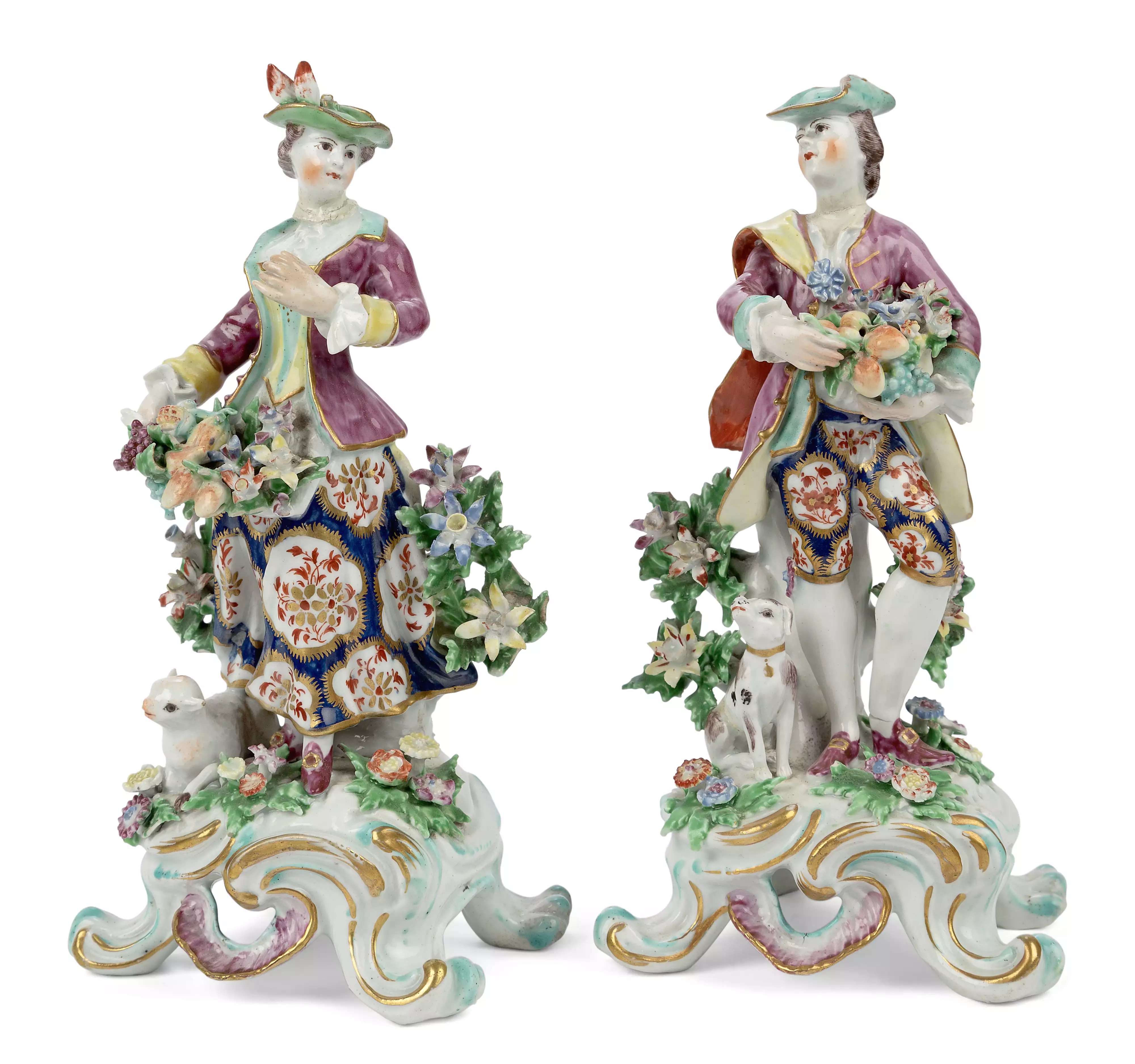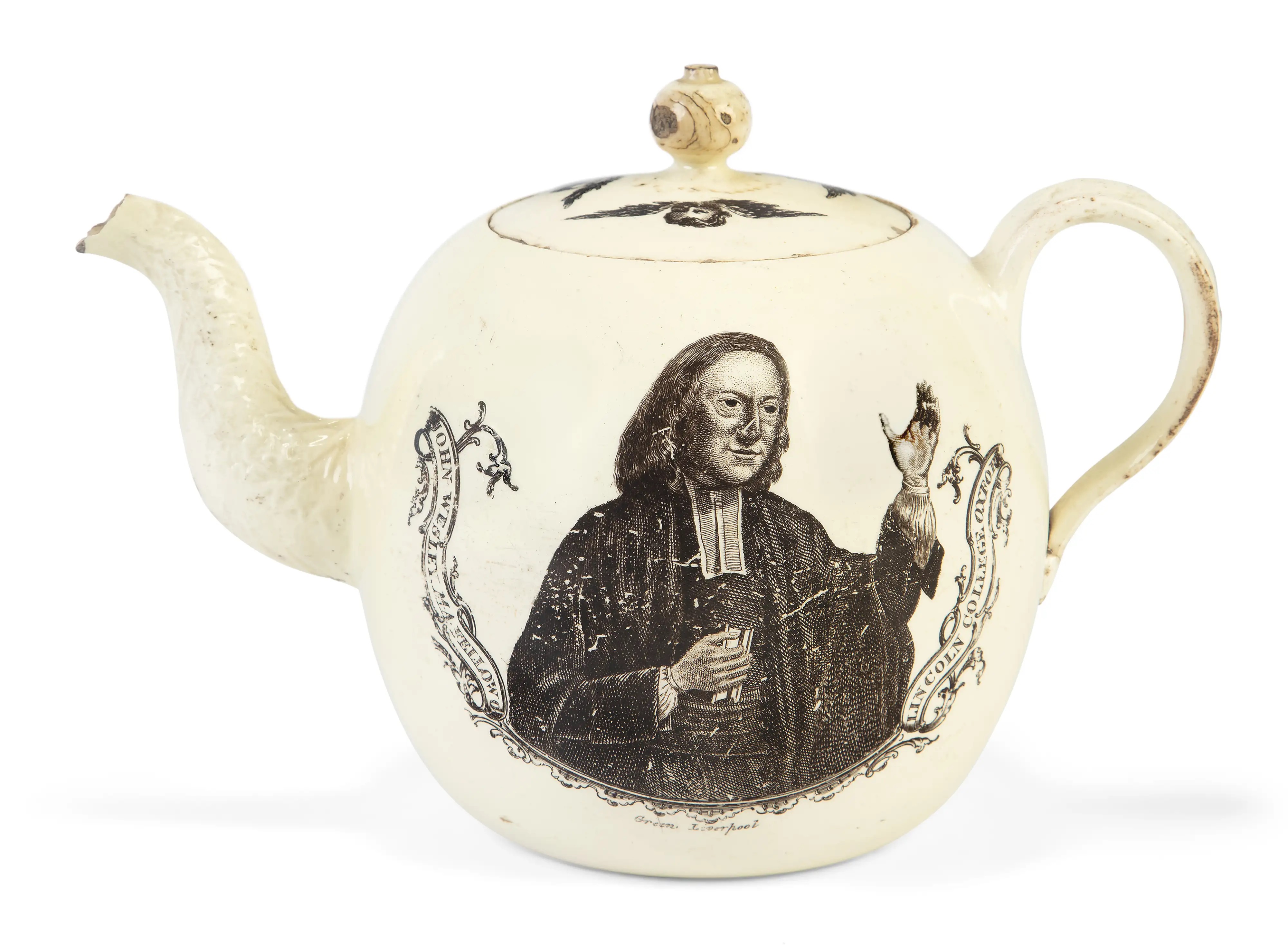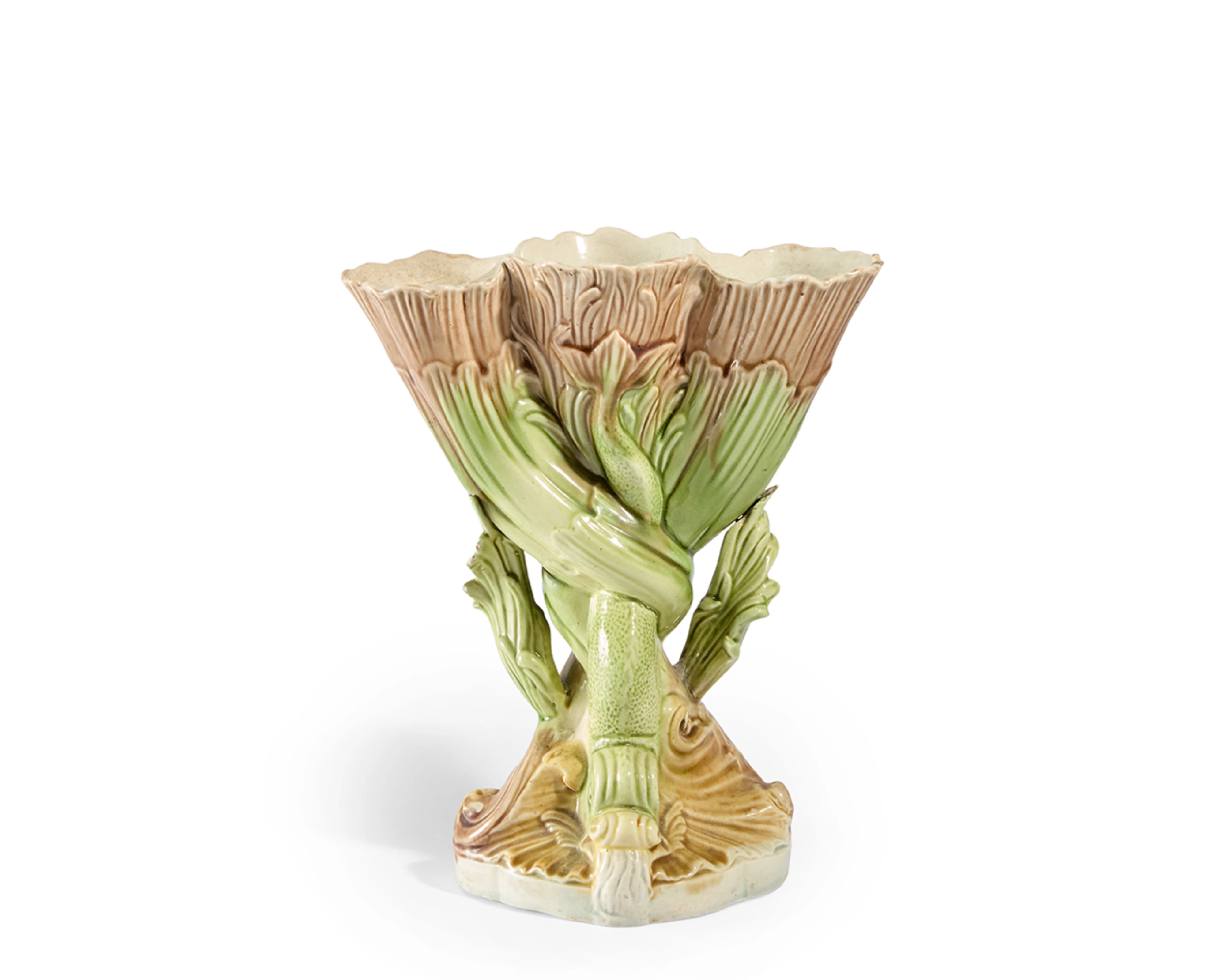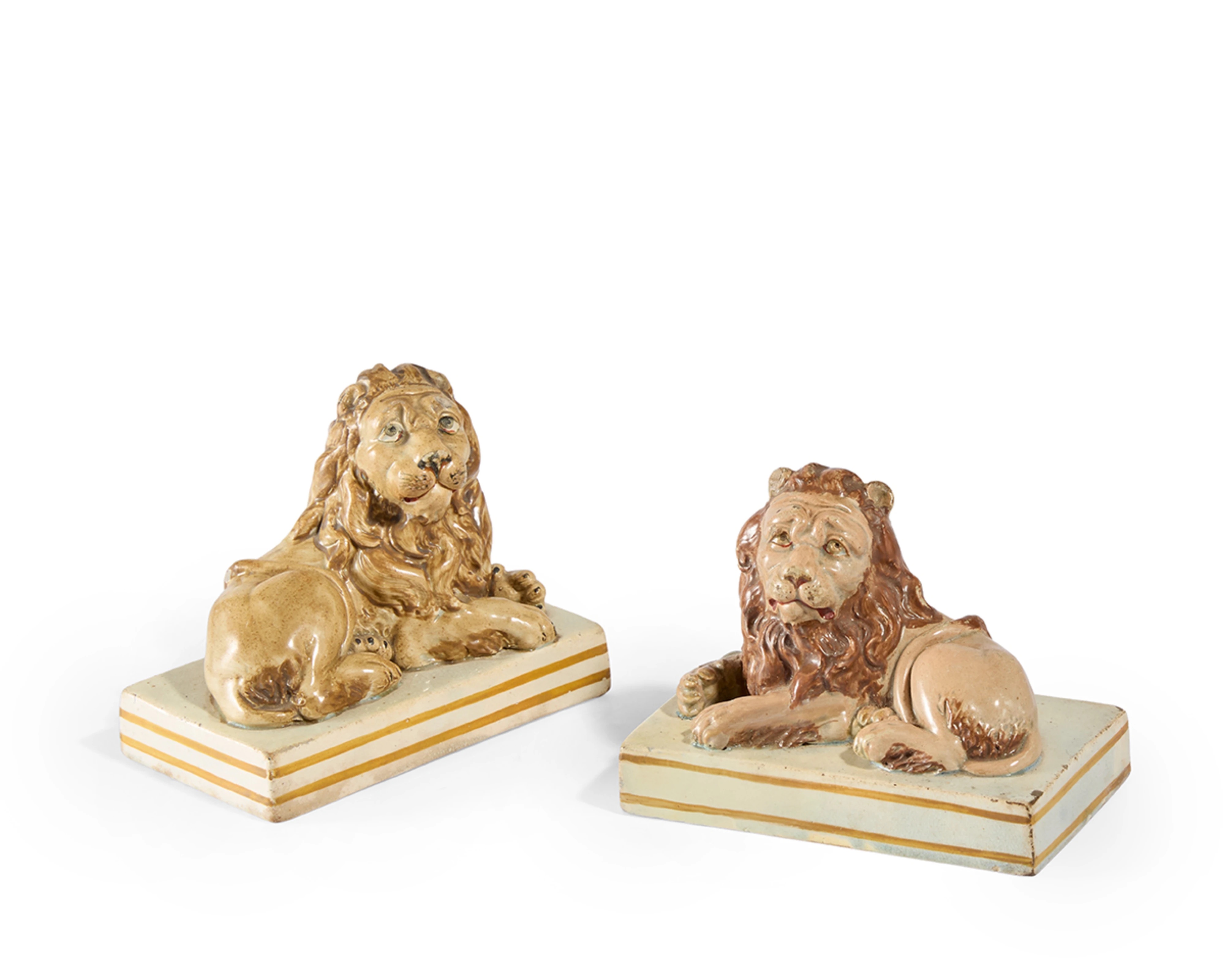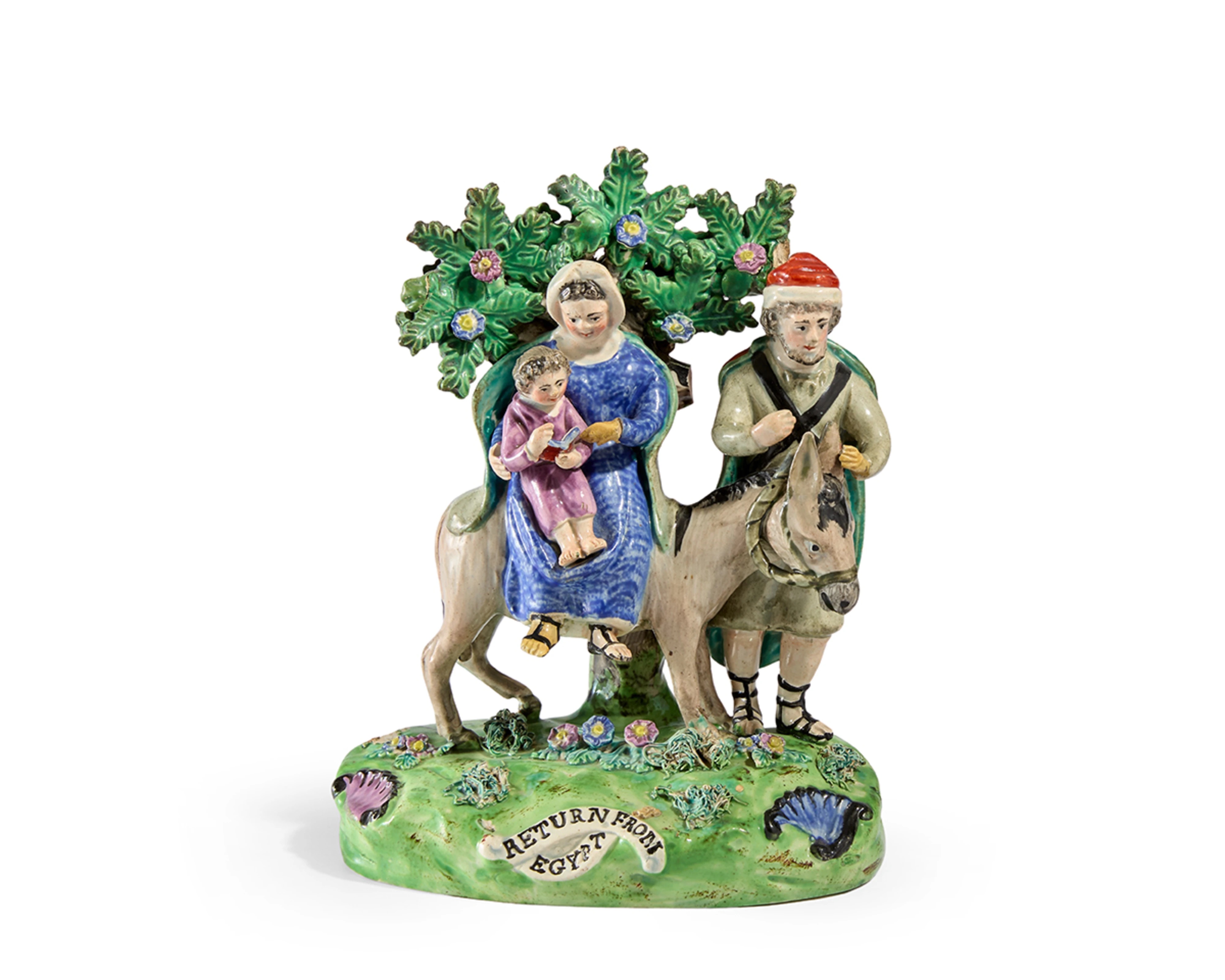Collecting Staffordshire Earthenware Figures: History, Types & Auction Tips (2025)
Staffordshire earthenware figures emerged in the early 18th century and quickly became one of the most distinctive and widely collected forms of English pottery. While figural ceramics have existed for centuries across many cultures, the tradition of modelling human and animal figures in Staffordshire clay reached its height of sophistication and popularity in the hundred years following the arrival of white salt-glaze potters in the 1730s.
Earthenware vs Porcelain: What’s the Difference?
On a technical level, porcelain is translucent, whereas earthenware is opaque. Porcelain production in England was first accomplished in the mid-1740s, and in a rush to compete with Chinese porcelains exported into the country, porcelain figures were produced in large numbers in the mid-eighteenth and nineteenth centuries. The wealthy upper echelons of society were the target market for porcelain, and for the growing mercantile and trading classes with enough disposable income to acquire fine wares — but not enough wealth for porcelain — the Staffordshire earthenware figures fulfilled their demands.
Creamware vs Pearlware: Types of Staffordshire Pottery
One of the most collectible types of Staffordshire pottery, creamware is, quite simply, cream-coloured earthenware. It was the standard for glazed earthenware from around 1740 to 1840, and propagated by such giants of the ceramics industry as Josiah Wedgwood, who commented in a letter to his partner Bentley, “how rapidly the use of it has spread almost over the whole globe, and how universally it is liked”. Creamware had a fine (thin) form and clean glaze which provided the ideal ground for enamellers to produce their ingenious painting and remained true to English earthenware tradition in its distinction in appearance from porcelain.
Meanwhile, pearlware is earthenware with a pearl glaze, having a bluish tint from the introduction of cobalt into the glaze formula, and is traditionally thought to have been introduced no earlier than 1775 but certainly by 1779, and by none other than Josiah Wedgwood. His product was called ‘Pearl White’ in an effort to appeal to a demand for whiter-looking wares at modest prices, and provide some competition to the increasing imports of European and Chinese porcelains. For variations in colour, other metal oxides were used to tint the glaze: copper for green, iron for yellow, manganese for brown or purple, and more cobalt for a stronger blue — making it one of the most recognisable and desirable Staffordshire figure styles for collectors today.
A Ralph Wood pearlware dolphin flower vase, c.1770–90, lot 184, Fine & Decorative 10th July 2025
Enamel-Painted Staffordshire Pearlware Figures
Enamel-painted pearlware figures are among the most commonly seen types of Staffordshire pottery figures at auction. Until the late 18th century, this decorative technique was confined to more expensive porcelain and white salt-glazed stoneware due to the cost of the process. By this time, Staffordshire potters had a great many sources of inspiration, including prints and engravings, earlier porcelain figures, and English-made plaster copies of antique statues seen by clients on the Grand Tour.
Most fashionable of the available subjects were Neo-Classical models, followed by Biblical subjects, and least commonly, portraits. Notable makers to collect include William Greatbatch, Ralph Wood, James Neale, and Enoch Wood and James Caldwell (Wood & Caldwell).
Staffordshire Bocage Figures: Rustic Charm and Collector Appeal
These Staffordshire bocage figures are highly sought after by collectors for their decorative appeal. The term "bocage" comes from the French word meaning woodland, and refers to leafy trees that support and visually frame the person or narrative depicted. Initially, these trees served a structural purpose during firing, but by the 19th century, improved earthenware formulas allowed them to become purely decorative.
Though sometimes considered naïvely made or "rustic," bocage groups were costly to produce. The figures were crafted using multi-part moulds, with elaborately modelled bases and individually applied foliate sprays and flowerheads. In terms of subject matter, they often featured Classical or Biblical scenes — and sometimes exclusively so — in the bocage format. Perhaps the best-known makers of bocage groups are John Walton and Enoch Wood, with Walton’s pieces often bearing a banner impressed with his name.
How Much Are Staffordshire Figures Worth at Auction?
Staffordshire earthenware figures are, fortunately for collectors, quite affordable. The average price for a pearlware figure can range from £100 up to £1,000, and possibly more for rarer or particularly well-preserved examples. As with any antique ceramic, condition plays an important part, and provenance can significantly elevate a figure’s value. To be confident before bidding, always enquire with a specialist or auctioneer.
How to Collect Staffordshire Earthenware Figures: Tips for Beginners
To those beginning a collection of Staffordshire pottery figures, there are plenty of excellent reference sources. Pat Halfpenny’s English Earthenware Figures 1740–1840 is an invaluable volume, and further general guidance can be found in the written work of Geoffrey Godden and Donald C. Towner.
Today’s market has no shortage of Staffordshire figures for those with a discerning eye. Roseberys is fortunate to be offering a collection of Staffordshire earthenware figures in the Fine & Decorative sale on 10th July 2025, alongside other ceramics including delftware and porcelain.
Browse the sale via our website here: https://www.roseberys.co.uk/fine-decorative/2025-07-10
Frequently Asked Questions about Staffordshire Earthenware Figures
Q: What is the difference between Staffordshire pearlware and creamware?
A: Creamware has a warm, cream-colored glaze, while pearlware contains cobalt, giving it a bluish tint. Both are types of Staffordshire earthenware developed in the 18th century.
Q: Are Staffordshire pottery figures valuable?
A: Most Staffordshire earthenware figures sell between £100–£1,000 at auction, with rare pieces fetching higher prices depending on condition and provenance.
Q: Who were the most famous Staffordshire potters?
A: Notable names include Josiah Wedgwood, Ralph Wood, William Greatbatch, John Walton, and the partnership Wood & Caldwell.
Q: What are bocage figures in Staffordshire pottery?
A: Bocage figures are Staffordshire ceramics with leafy treelike backdrops, typically illustrating Classical or Biblical themes, and prized for their charm and intricate detail.


